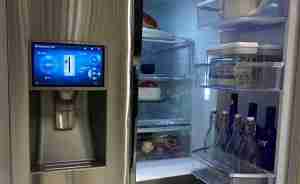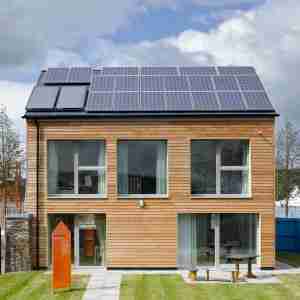
5 September 2014
Futuristic homes: What will properties be like in a 100 years?
The houses we live in reflect the lives we lead, and the world in which we live. Our homes embody the way we experience the world. It is interesting then to think what our homes might look like in 100 years’ time. The world is likely to be a very different place than it is today. What will our homes look like? How will we use them? What will they be designed for? At Premier, we thought we’d investigate…
Intuitive homes: Smart Homes

The internet of things, a term referring to a network of devices connected to the internet, is already starting to become a reality when it comes to application in homes. A ‘Smart Home’ is a property in which appliances are connected to the internet and can communicate with each other. In 100 years, the technology looks likely to have improved so much that these homes could be standard across the property market.
This intuitive technology means that you could directly communicate with devices around your home. If you are on your way to work and realise that the washing hasn’t been done, you could send a text message to your washing machine, telling it to turn itself on. You could even call the fridge and ask if there was any milk left.
At the Building Research Establishment (BRE), a prototype Smart Home has been constructed and is currently being tested. The internet of things looks set to dominate homes in the future.
Affordable eco-homes: The ‘Passivhaus’ standard

As fossil fuels run out and the effects of global warming become a reality 100 years from now, self-sufficient, environmentally friendly homes look set to be increasingly important. For the vast majority, owning an eco-home (or any sort of home) is a distant dream, but in Europe, cheap environmentally friendly houses are steadily gaining ground.
The incredibly energy-efficient Passivhaus standard results in ultra-low energy homes that are brilliantly energy efficient. Utilising triple glazing, high-quality insulation and wasted heat from white goods, these homes have an incredibly low carbon footprint and are popular in Scandinavian countries and in Germany. As renewable energy technology, and energy efficiency technology, develops and becomes increasingly miniaturised, the possibility of widespread energy neutral homes is an exciting prospect.
Ultra-secure homes: The Safe House

In 100 years from now, the zombie apocalypse could well have reduced civilisation to hordes of the hungry undead. Luckily, Robert Konieczny, a Polish architect, seems to have been preparing for just that eventuality. Built for a couple who wanted a house in which they could feel completely secure, the Safe House combines the impregnability of a fortress with energy efficient modern design.
Made of concrete, steel and timber, everything about the house is designed with security in mind. Movable concrete walls create a series of buffer zones that can restrict entry to the house. Access to the property itself is through a suspended drawbridge. At night, a massive steel gate descends on the southern section of the house, which makes it impregnable and acts as an internal screen for movie projections.
Konieczny is keen to stress the organic inspiration behind the house. “Every day the house acts in a similar way; it wakes up every morning and closes up after the dusk. This routine reminds us of the processes occurring in nature: the house resembles a plant in its day and night cycle.” As security technology improves over the next few decades, similar houses could become a reality in locations where security is paramount.
Premier: Helping you future-proof your home
Premier are pleased to be able to offer double glazing technology that is truly at the forefront of technology. We over a range of products perfect for future-proofing your home, including triple glazing, high-quality insulation and ‘Secured by Design’ locks.
For more information about any of our products, please give us a call on 020 8683 4446. Alternatively, you can send us an email. We look forward to hearing from you.

